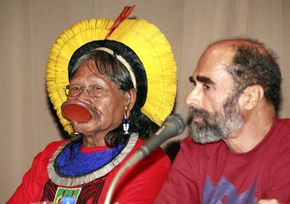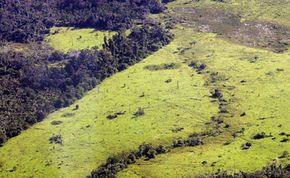We're called upon to do an awful lot of crusading these days. Protect polar bears from extinction. Stop global warming. Keep gorillas. These images are meant to elicit our sympathy and compel us to action. But when we saw recent pictures of an uncontacted tribe in the Acre State of the Amazon rainforest, many of us were simply shocked.
In today's interconnected, plugged-in, linked-up world, it seems incomprehensible that a whole band of people could've gone unnoticed for so long. And there's a reason for that disbelief: It's not exactly true.
Advertisement
This group of people has actually been on the Brazilian and Peruvian governments' radar for about 20 years. What's more, these photos were taken nearly a month before they were released to the public. A crew flew over the tribe's tiny village (which lies on the border of Brazil and Peru) for 20 hours between April 28 and May 2, 2008, documenting the people. The photos were published in major news outlets around the world on May 29 and 30.
The photos pictured about 15 different tribespeople: men, women and children. Some men and women were painted red and black. They appeared agitated -- the men pointed bows and arrows toward the planes hovering above their village, which appears to be comprised of six malocas, or huts with thatched roofs made of grass.
But this sighting wasn't what anthropologists refer to as first contact. That occurs when an isolated tribe is physically approached by an outside party. Sometimes first contact is made by anthropologists who want to study a tribe's ethnicity and culture; other times, encroaching loggers, companies scouting for oil or missionaries reach the tribes first.
According to Survival International, an organization that helps protect tribal people and promote awareness about them, there are about 100 uncontacted groups in the world. Nearly 50 percent is estimated to live in Brazil and Peru. Why here? The Amazon rainforest provides a thick, dense retreat for these people. However, rapid deforestation threatens to expose these long-isolated groups.
Is exposure such a bad thing? And if it is, then why would the Brazilian government release images of the tribe? Find out on the next page.
Advertisement













